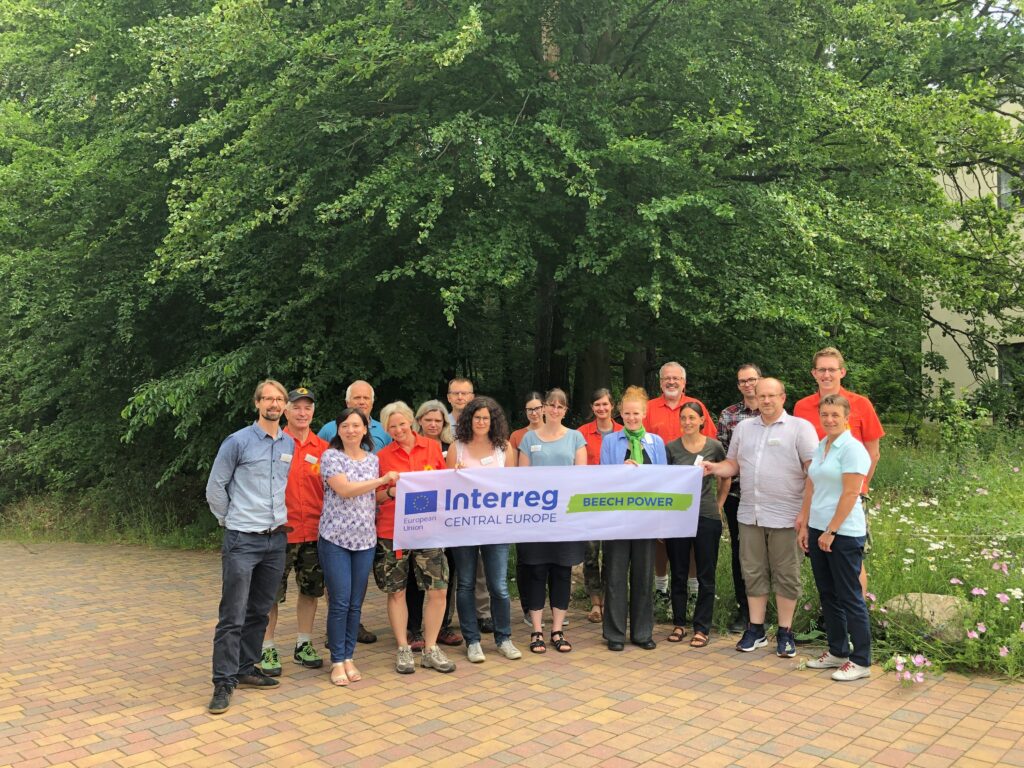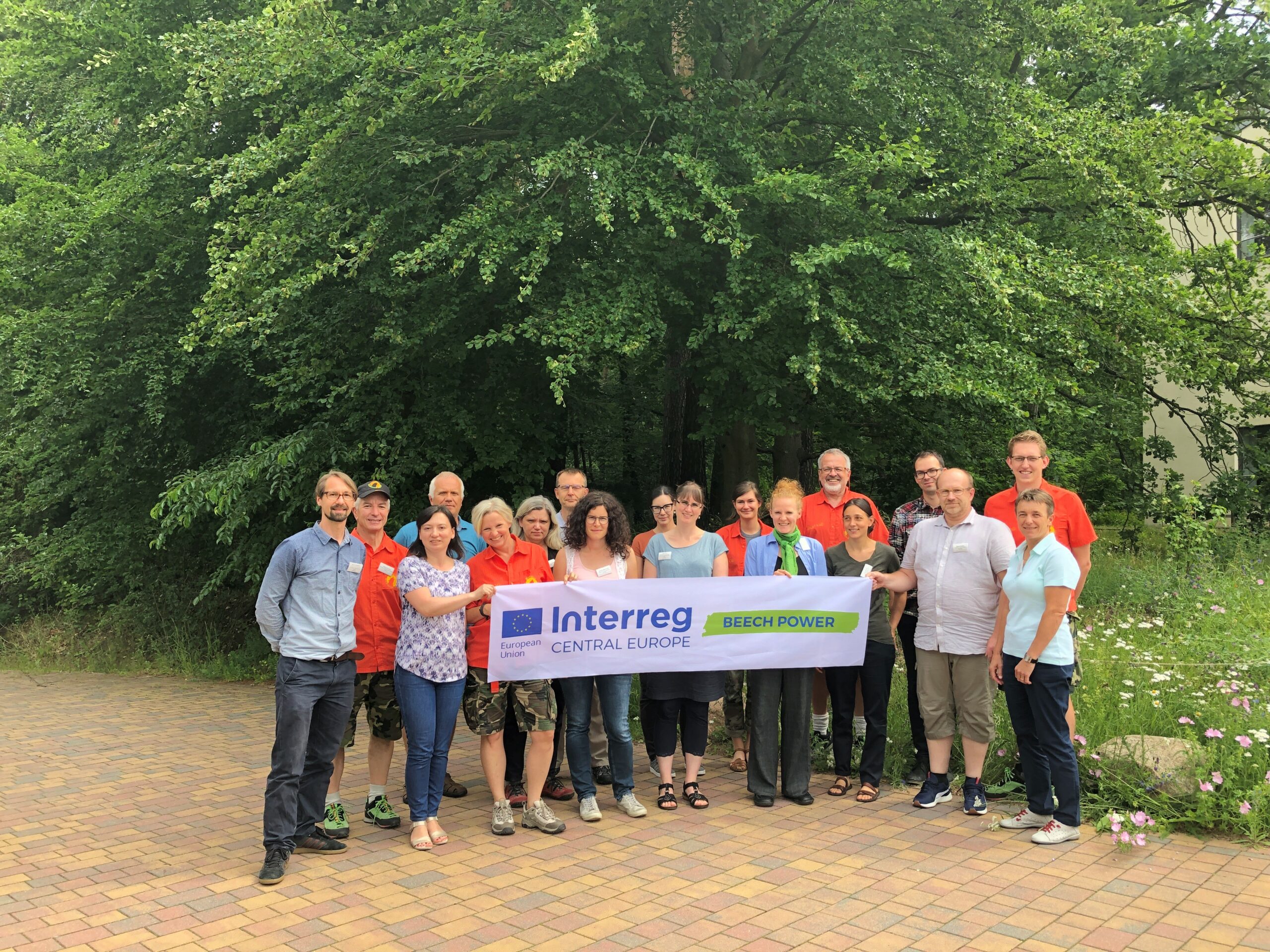BEECH POWER project
Local management units from the component parts of World Heritage ‘Ancient and Primeval Beech Forests of the Carpathians and Other Regions of Europe’ face similar challenges. However, their respective environmental and socio-economic contexts differ considerably on local and national level. For example, buffer zones are managed differently across single beech forests, visitor numbers are rising, and there is a clear shortage of proper management tools and resources in the protected areas located in different administration districts. Thus, in order to solve these challenges and achieve a successful and long-term protection of these ecosystems, cooperation beyond borders and harmonised transnational solutions are key.
Given this necessity, in 2019 public authorities, scientists and civil societies in Germany, Austria, Slovakia, Slovenia and Croatia joined efforts, supported by the Interreg CENTRAL EUROPE Programme to establish a cooperation platform through the creation of the BEECH POWER project.
Project partnership
The BEECH POWER project partnership involves 7 partners from 5 countries, led by the Eberswalde University for Sustainable Development from Germany:
- Eberswalde University for Sustainable Development (DE)
- European Wilderness Society (AT)
- Kalkalpen National Park (AT)
- Public Institution Paklenica National Park (HR)
- Angermünde City Administration (DE)
- Slovenia Forest Service (SI)
- National Forest Centre (SK)
Objectives of the project
The overall aim of the BEECH POWER project is to reduce existing conflicts and increase the capacities of authorities for the sustainable management of these forests, as well as to create benefits for local communities. The project therefore aims at:
- Empowering World Heritage Beech communities as model for ecosystem-based sustainable development
By adopting an ecosystem-based and participatory approach, the project aims to enhance cooperation between World Heritage component parts and adjacent communities on a regional and transnational level. Further, it engages participation of local/regional public authorities and civil society in the management of the World Heritage component parts and their surroundings, as well as in the creation of governance strategies for regional sustainable development.
- Creating a sustainable model for buffer zone management around World Heritage Beech forests
Buffer zones are border areas of Protected Areas, with high potential for conflicts between different interest groups. However, buffer zones are also areas for regional outreach of the Protected Areas in terms of involving stakeholders in their management, transferring knowledge regarding natural heritage and promoting sustainable development in the region. That is why the project aims to develop strategies for Protected Areas and concerned public authorities for active stakeholder participation in buffer zone management, for conflict solution, visitor information and World Heritage communication as well as sustainable forest management.
- Developing an exemplary European Beech Forest Quality Standard and Certification System
The management quality of European beech forests may differ between Protected Areas comprising World Heritage component parts. For this reason, the project is developing a handbook including criteria and indicators for evaluating the conservation status and management quality of Protected Areas and their surroundings. With this evaluation and certification system, the objective is to motivate public authorities and stakeholders to actively participate in improving the management quality of this forests.
For more information, visit:
Interreg – CENTRAL EUROPE Website: https://www.interreg-central.eu/BEECH-POWER
Social Media Platform: https://beechpower.eu
Facebook: https://www.facebook.com/BEECHPOWER/
Twitter: https://twitter.com/BEECHPOWER
LinkedIn: https://www.linkedin.com/company/beechpower/
YouTube: https://www.youtube.com/channel/UCxKbVfQ2sW48e-iNktr6RHw

